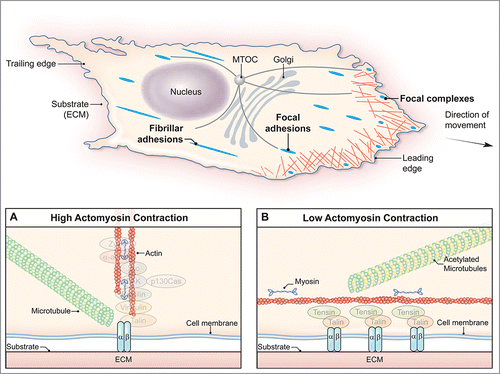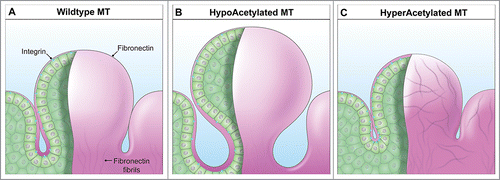Figures & data
FIGURE 1. Crosstalk between actomyosin contractility and microtubule acetylation. Actomyosin and microtubules regulate the rate of cell migration by controlling the assembly and disassembly of integrin-mediated adhesions. Typically, integrin-mediated adhesions are categorized as focal complexes, focal adhesions, or fibrillar adhesions. When cells are under high actomyosin contractility, there appears to be a low level of microtubule acetylation (panel A). However, when cells are under low actomyosin contractility, there appears to be an increase in the acetylation of microtubules and maturation of integrin-mediated adhesions to the fibrillar form (panel B).

FIGURE 2. Actomyosin contractility and microtubule acetylation govern the levels of fibronectin and α5β1 integrins in developing salivary glands. Salivary glands explants infected with lentivirus expressing an acetyl-mimetic mutant of tubulin (HyperAcetylated MT; panel C) appear to have more fibronectin and α5β1 integrins compared to glands expressing the acetyl-null mutant of tubulin (HypoAcetylated MT; panel B). Although more characterizations are needed, fibronectin polymerizes into filaments and is depicted in fibrous form at the basement membrane for clarity.

